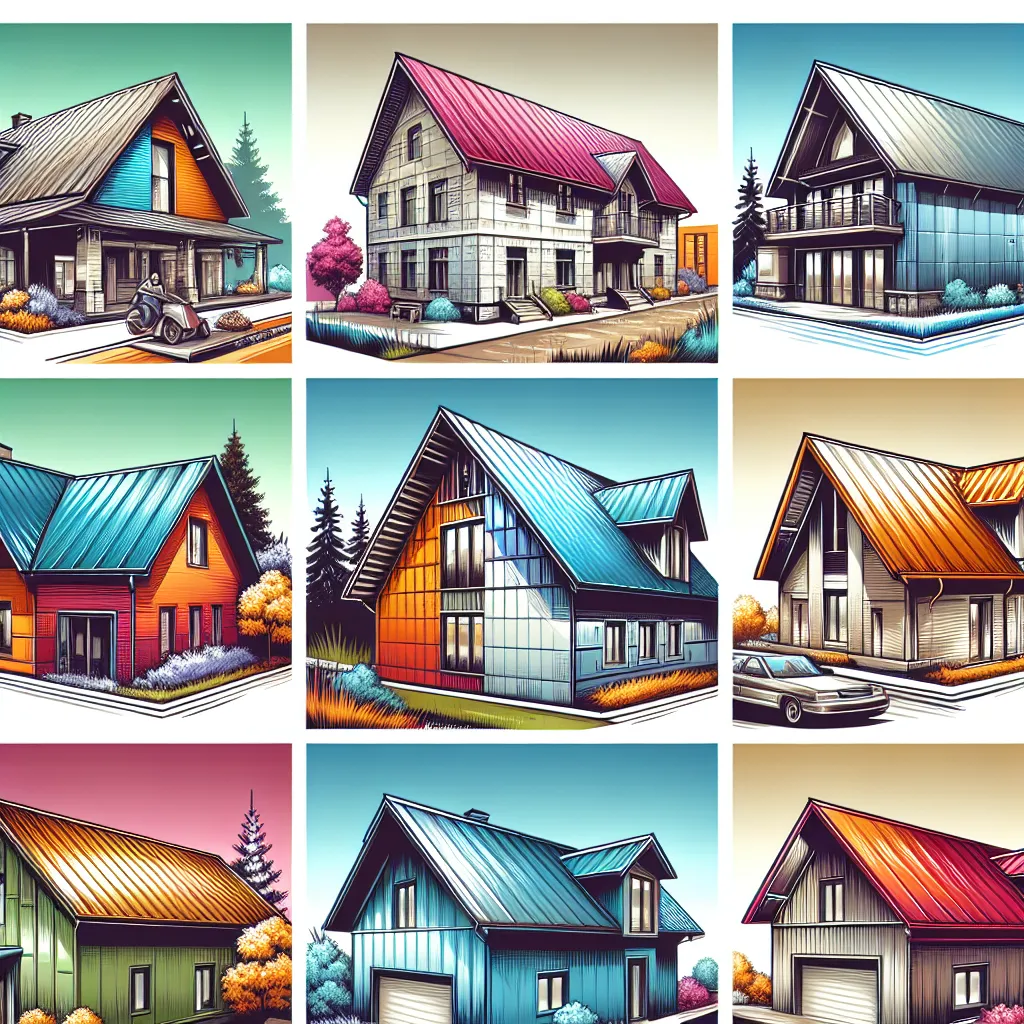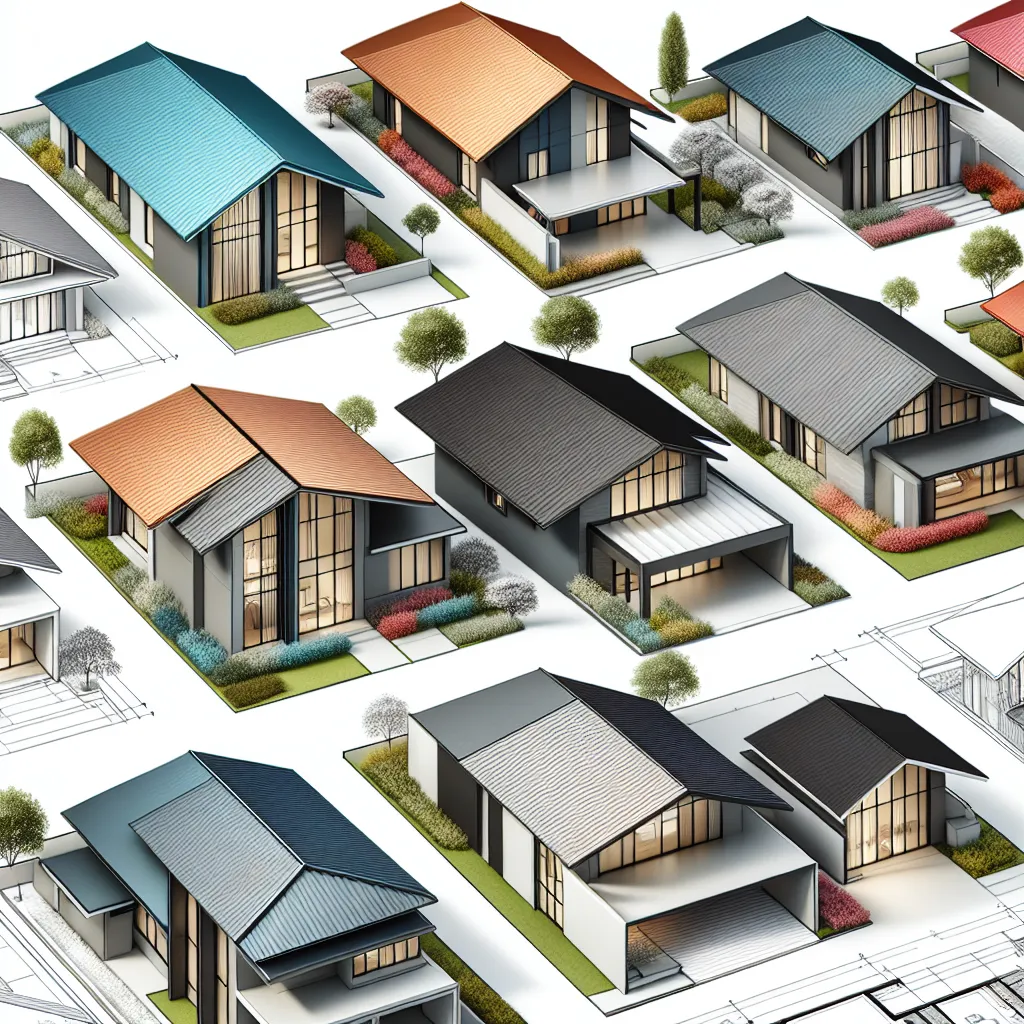Metal roofing isn’t just for barns and factories anymore. These days, metal roofing grabs attention for its sleek style, wild versatility, and surprising long-term value. If you’re tired of replacing leaky shingles or want a roof that shrugs off storms like a superhero, metal roofing deserves a closer look. Let’s cut through the confusion and get real about what metal roofing offers—and where it might not live up to the hype.
What Is Metal Roofing and Why Should We Care?
Metal roofing is a system made from panels, tiles, or shingles crafted from metals like steel, aluminum, copper, or zinc. It’s not just about looking modern (though, let’s admit, it does look sharp). Metal roofing matters because it can last up to 70 years, often outliving three generations of traditional asphalt roofs. It’s fire-resistant, tough on weather, and can even help lower energy bills. But it’s not perfect—there are quirks to know before you commit.
The Benefits of Metal Roofing
Durability That Outlasts the Rest
Unlike asphalt or wood, metal roofing resists cracking, shrinking, and eroding. Hail? High winds? Scorching sun? Metal takes it all in stride.
- Lifespan: 40–70 years (sometimes more)
- Fire rating: Class A (the best)
- Weather resistance: Handles rain, snow, hail, and wind
- Pest-proof: No termites, no rot
Energy Efficiency That Pays You Back
Metal reflects sunlight, keeping attics cooler and slashing air-conditioning bills. In fact, some studies show energy savings of up to 25% compared to darker, heat-absorbing roofs.
Quick Table: Reflectivity Comparison
| Roofing Type | Solar Reflectance (%) | Typical Lifespan (yrs) |
|---|---|---|
| Metal (light) | 60–75 | 40–70 |
| Asphalt Shingle | 5–25 | 15–20 |
| Tile | 25–35 | 30–50 |
Low Maintenance
Just a quick rinse with a hose and a glance at the fasteners or paint finish now and then. No annual patching or moss scraping.
Eco-Friendly (With a Catch)
Most metal roofing contains 25–95% recycled content and is 100% recyclable at end of life. That’s a win for the planet.
Range of Styles
Don’t picture only corrugated farm roofs. Metal roofing comes as standing seam panels, shingles that mimic slate, and tiles in every color you can think of.
Drawbacks and Real-World Limitations
Upfront Cost
Metal roofing costs more at first—sometimes double or triple the price of asphalt shingles. But it’s a one-and-done investment for decades, not just years.
Noise? Depends Who You Ask
Rain on a metal roof can sound cozy or like a steel drum band. Proper insulation usually quiets things, but if you want absolute silence, ask your installer about sound-dampening underlayment.
Denting and Scratches
Hail can dent thinner metal, especially softer materials like aluminum. Tree branches or heavy foot traffic might leave marks, too.
Tricky Repairs
Matching the exact color and finish for repairs years later isn’t always easy, especially if your style gets discontinued. Sometimes you’ll spot a patch from the street.
Metal Roofing in Everyday Life: Use Cases
Residential Homes
From modern farmhouses to city bungalows, metal roofs add curb appeal and peace of mind. Some homeowners use them for the whole house, others just on accents—think porches or bay windows.
Commercial & Public Buildings
Hospitals, schools, and offices love metal roofing for its low maintenance and storm resistance. Plus, insurance companies often give discounts for fire resistance.
Agricultural & Industrial
Barns, factories, and warehouses have used metal roofing forever—it’s affordable long-term, tough as nails, and shrugs off heavy snow.
Unique Architectural Projects
Architects love to play with color, shape, and texture. Metal roofing bends, curves, and can be cut to wild shapes, turning a roof into a statement.
Types of Metal Roofing: What Fits Your Needs?
By Material
- Steel: Strong, affordable, and versatile (often coated with zinc for rust protection)
- Aluminum: Lightweight, rust-proof, good for coastal areas
- Copper: Gorgeous, pricey, and develops a green patina
- Zinc: Durable, self-healing, but softer and more expensive
By Panel or Tile Style
- Standing Seam: Sleek vertical panels with hidden fasteners—premium and watertight
- Exposed Fastener: Screws visible on the surface—less expensive, more utilitarian
- Stamped/Shingle: Mimics classic shingles, shakes, or tiles for a traditional look
Common Metal Roofing Gauges
| Application | Typical Gauge (Steel) | Typical Thickness (Aluminum) |
|---|---|---|
| Standing Seam | 22–24 | .032”–.040” |
| Exposed Fastener | 26–29 | .024”–.032” |
| Stamped Shingles | 29 | .019”–.024” |
How to Choose the Right Metal Roofing
Key Questions to Ask
- What’s my climate?
- Steel for snow and storms, aluminum for salty air
- What’s my budget?
- Standing seam is pricey but lasts longest
- Curb appeal or utility?
- Stamped shingles for beauty, exposed fastener for barns
- Will I install solar?
- Standing seam makes solar mounting a breeze
Cost Breakdown (Averages, Per Square Foot)
| Roof Type | Material & Install |
|---|---|
| Metal (standing seam) | $9–$15 |
| Metal (exposed fastener) | $5–$10 |
| Asphalt Shingle | $3–$6 |
| Clay/Concrete Tile | $10–$18 |
Tip: Always check warranties—paint, weather-tightness, and labor. Some are amazing, others full of loopholes.
Three Real-World Stories
1. Storm Survivor
A family in Oklahoma swapped their old shingles for a steel standing seam roof. When a tornado touched down, their house was one of the few on the block with no roof damage at all. They’ve recommended metal roofing to everyone since.
2. Budget Win
A small business owner in Maine needed a fast, affordable fix for his aging warehouse. He chose exposed fastener panels and saved enough on cooling bills to pay off the investment in under six years.
3. Modern Makeover
An architect in Portland designed her own home with bright blue aluminum metal roofing. Besides helping the house stand out, the reflective roof dropped her summer energy bills by 30%.
Evaluating Metal Roofing: What Really Matters
Criteria Checklist
- Warranty Length & Coverage
- Installer Experience
- Paint and Finish Quality
- Panel Thickness (Gauge)
- Fastener System (Hidden or Exposed)
- Energy Star or Cool Roof Rating
- Recycling Content
Pro Tip
Ask to see and touch real metal roofing samples before deciding. Finishes and colors can look wildly different in person vs. on a screen.
Most-Asked Questions About Metal Roofing
Does metal roofing attract lightning?
Nope. Metal roofing doesn’t attract lightning, but if struck, it safely disperses electricity. It’s actually safer than many other materials.
Will my metal roof rust?
Not if you choose the right material and coating for your climate. Steel is usually coated with zinc or aluminum to stop rust. Aluminum, copper, and zinc don’t rust at all.
Is metal roofing really noisy in the rain?
With good attic insulation and underlayment, it’s only slightly louder than shingles. Some folks even find the sound relaxing!
Can I put metal roofing over my old shingles?
Often, yes! This saves money and landfill space. But your installer should check for rot or structural problems first.
How much more does metal roofing cost?
Upfront, it’s more—sometimes double. But you’ll likely never replace it, and lower energy bills help balance the books.
Will it dent from hail or walking on it?
Thicker panels resist dents better, but big hail or careless stomping can leave marks. Ask your roofer about the best thickness for your area.
What colors and styles can I get?
Nearly any color, finish, or style you want—from rustic red barns to ultra-modern black panels. There are even options that look like shake, slate, or clay tile.
Metal roofing isn’t just a trend—it’s a practical, stylish, and eco-friendly choice that can fit almost any building and need. Sure, it asks for more up front, and you’ll have a few extra questions for your installer. But for those of us who want a roof we can forget about (except when we’re admiring how cool it looks), metal roofing just might be the answer. For those not ready to say goodbye to asphalt, at least now you know what you’re missing (and, honestly, you won’t miss those surprise leaks or endless repairs). When you’re ready for a roof that’s as tough and lasting as your dreams, metal roofing is waiting.
metal roofing
Metal roofing is a durable, long-lasting roofing solution that can last 50-70 years or more, making it a smart investment. It offers exceptional weather resistance, handling hail, wind, and snow with ease, and is fire-resistant, earning a Class A rating. Compared to asphalt shingles, metal roofing may cost more upfront but saves money by reducing energy bills (up to 25%) and minimizing maintenance.
Key benefits include:
– High durability and longevity
– Eco-friendly and 100% recyclable
– Wide style and color options
– Excellent thermal reflectivity (see graph below)
Cost Comparison:
| Material | Initial Cost | Lifespan | Long-term savings |
|---|---|---|---|
| Metal Roofing | Higher | 50+ yrs | Significant |
| Asphalt Shingles | Lower | 15–20 yrs | Less |
Thinking about upgrading? Contact [Your Company] today for a free consultation and discover how metal roofing can transform your property!
Frequently Asked Questions About Metal Roofing
Does metal roofing attract lightning?
No, metal roofing doesn’t attract lightning. It safely disperses electricity if struck, making it actually safer than many other roofing materials.
Will my metal roof rust?
Rust isn’t a concern if you choose the right materials and coatings. Steel roofs are coated with zinc or aluminum to prevent rust, while aluminum, copper, and zinc are naturally resistant.
Is metal roofing noisy during rain?
With proper attic insulation and underlayment, the sound of rain on a metal roof is only slightly louder than on shingles and can be quite soothing for many homeowners.

